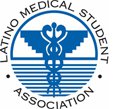The Pink Carpet
I first met David during my psychiatry sub-internship rotation in Miami Beach. David had been diagnosed many years with bipolar disorder with psychosis. He was an overweight, cheery, Cuban-American guy in his late 50’s who had been in Miami ever since he was a child. He had been hospitalized several times in the past for his condition, and on this particular episode, he had been in the hospital for well over a month. I had the pleasure of talking to him during one of our daily rounds, and he opened up to me about the things he liked doing, and about his life in the assisted living facility. It was a little difficult keeping up with what he was saying as he changed topics quite frequently, as many patients with his condition does, and many of what he said sounded odd or delusional.
Being on the sixth floor, the view from the psych ward is amazing. It overlooks the waters of Biscayne Bay, along with several little islands in the bay. David turned to me and started talking about how in the past he saw pink carpet around the islands in the bay. Pink carpet? I had no idea what he was talking about. I shrugged it off as just another delusion, and moved on.
Later on while I was browsing through pictures of modern environmental art, I came across this picture:
In 1983, Bulgarian-born artist Christo and his wife and fellow artist Jeanne-Claude designed and wove 6.5 million square feet of pink polypropylene carpet around the eleven islands in Biscayne Bay. 79 different patterns of the fabric were sewn to follow the irregular contours of the islands. The bright fluorescent pink contrasted with the green tropical vegetation of the surrounded islands, and was an expression of the way people lived between land and sea in Miami. It could be seen and admired by the people of Miami for 2 weeks.
Lesson of the day:
Sometimes what sounds delusional coming out of a psychiatric patient’s mouth may actually turn out to be true. So familiarize yourself in art, TV, music, pop culture, and as many things as you can, because non-medical knowledge may certainly help your medical practice.
Note: Names, ages, and other pertinent info have been modified to protect identity of the patient.












Dear Mr. Benji,
You are such an inspiration to me, and I am very grateful for the information that you provide through your website. Truthfully, I find myself with anxiety as I am being interviewed in two weeks. Incidentally, I am not concerned at all about the interview process, because I know how much I want this. However, what I am concerned is that I am a non-traditional (much older) student, and what that means as it relates to my family who will be staying behind. Do you have any information regarding this topic? Maybe I will be the next Benji, but for for non-traditional students. Thanks again for your help, and I look forward to your comments. Incidentally, I live in West Palm Beach, FL and I would love to take you out for lunch if at all possible. Consider it an act of kindness on your end. Take care!
Sincerely,
Jose
Hi Jose,
Thanks for visiting my site and for the kind words. There are certainly many non-traditional students who attend AUC. I’ve had friends and classmates in their 40s and 50s attend and do well. Some bring their families with them to the island while others have family stay behind back home in the US or Canada. Either way, we all try our best to have faith and make the best of our situations. Here is some of my personal experience with keeping a long-distance with my wife: http://www.caribbeanmedstudent.com/2011/06/maintaining-a-long-distance-relationship-in-med-school/ . Also of note, you could also check out the AUC Spouse’s Organization at AUC. They are a great support group for spouses here, and my wife had some great support from them whenever she came to visit as well, and made her feel a part of the AUC community, even though she did not live with me on the island. Best of luck on your upcoming interview!
Benji